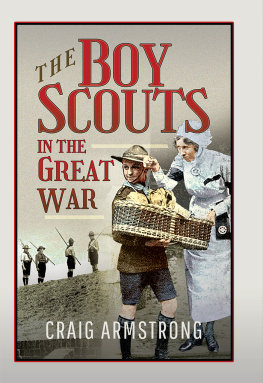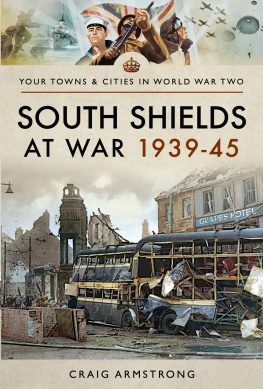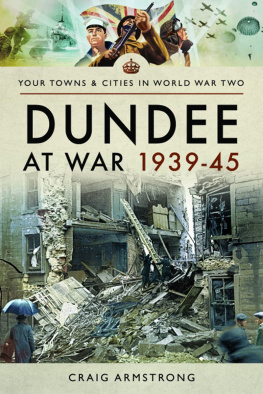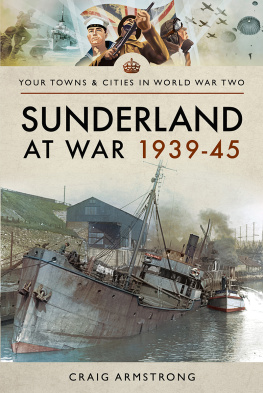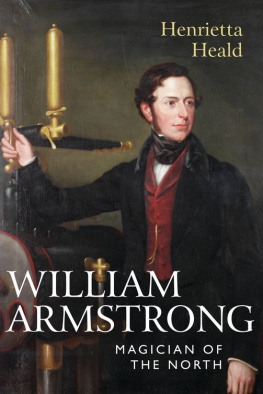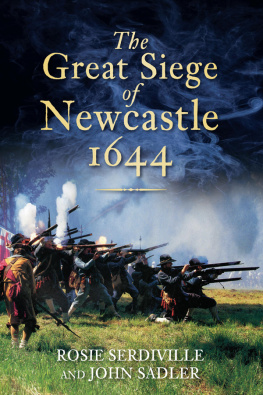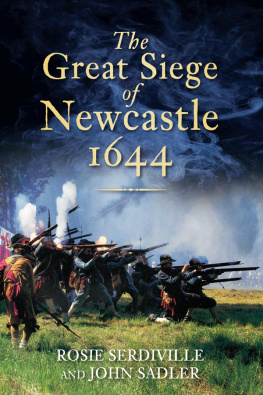First published in 2015 by
Pen & Sword Military
An imprint of
Pen & Sword Books Ltd
47 Church Street
Barnsley
South Yorkshire
S70 2AS
Copyright Craig Armstrong, 2015
ISBN 978 1 47382 209 2
eISBN 9781473857742
The right of Craig Armstrong to be identified as Author of this work has been asserted by him in accordance with the Copyright, Designs and Patents Act 1988.
A CIP catalogue record for this book is available from the British Library
All rights reserved. No part of this book may be reproduced or transmitted in any form or by any means, electronic or mechanical including photocopying, recording or by any information storage and retrieval system, without permission from the Publisher in writing.
Pen & Sword Books Ltd incorporates the Imprints of Pen & Sword Aviation, Pen & Sword Family History, Pen & Sword Maritime, Pen & Sword Military, Pen & Sword Discovery, Pen & Sword Politics, Pen & Sword Atlas, Pen & Sword Archaeology, Wharncliffe Local History, Wharncliffe True Crime, Wharncliffe Transport, Pen & Sword Select, Pen & Sword Military Classics, Leo Cooper, The Praetorian Press, Claymore Press, Remember When, Seaforth Publishing and Frontline Publishing
For a complete list of Pen & Sword titles please contact
PEN & SWORD BOOKS LIMITED
47 Church Street, Barnsley, South Yorkshire, S70 2AS, England
E-mail: enquiries@pen-and-sword.co.uk
Website: www.pen-and-sword.co.uk
C HAPTER 1
1914
Eager for a Fight?
Pre-1914 Newcastle upon Tyne was a city built on industry and commerce which still retained a significant working class and unique character. The city had been a cradle of the Industrial Revolution and had a firm base in traditional industries such as coal mining and export, iron founding and engineering. These industries fortunes had fluctuated throughout the immediate pre-war period with coal mining moving from the city boundaries to south-east Northumberland and Durham but the Tyneside was still the main exporter of coal to British and foreign ports. The heavy-engineering industries had by and large experienced a strong and sustained period spearheaded by developments led by companies including Sir W.G. Armstrong-Whitworth and Parsons Marine Steam Turbine Company.
In tandem with these established companies there had been attempts to establish newer and more advanced industries in the city. These included the production of motor vehicles by new and established companies and the manufacturing of electrical goods. However, these attempts had not been hugely successful and, although locally important in some cases, were not to demonstrate the ability to dominate the local economy to the same extent as other more traditional industries. Even before the war, a move towards a national economy with a focus on southern England had a huge impact on several of these new companies. Joseph Swans attempt to produce light bulbs on Tyneside between 1881 and 1886, for example, was undertaken with great local expertise and knowledge. Swan was not only a brilliant inventor, but was also a hugely successful and able businessman and he assembled a board of directors which included several high-profile entrepreneurs and businessmen (including: James Cochrane Stevenson; Theodore Merz; Hilton Philipson; and James Craig) but lasted only five years. The end came after a merger with Edison Company. The newly created Edison & Swan United Electric Light Company Limited (Ediswan), which was located in London, quickly came to the conclusion that it would be economically beneficial to move production away from the Tyneside and relocated their operation to Ponders End, Middlesex.
Likewise, Armstrong Whitworth attempts to enter the motor-car industry after the purchase of Wilson-Pilcher & Company a London-based car manufacturer in 1904 led to disagreements within the directors over production and research. The Wilson-Pilcher was produced at the Elswick works until 1907. After that date all vehicles produced were Armstrong Whitworth designed. Although the company was not helped by the attitude of its ageing chairman, by 1908 the production of motorcars was on a par with both Morris and Vauxhall. In 1910 and 1911, producing vehicles was actually more profitable than commercial shipbuilding. During the First World War, the company continue to produce the 17/25, 30/40 and 30/50 models and many were supplied to the military.
Although Newcastle had engineering, shipbuilding and coal exporting companies there was also a wide selection of other industrial concerns. However, some of the old industries had vanished during the immediate pre-war years. The major loss to Newcastle was the alkali trade which had declined severely until it was practically non-existent by 1900.
The concerns over the increasingly tense European situation would appear to have had a very negative effect in Newcastle as some people had focused their anger and anxiety on the small but visible German community in the city. In May 1914, the situation culminated in riots within the city which cost the ratepayers 800 for damage to property. However, these were relatively minor ripples when compared to the recent disturbances involving local suffragettes.
Although a thriving industrial centre, Newcastle upon Tyne had severe problems with poor standards of housing in many areas with poor sanitary conditions for many of the working class being commonplace. Because of the rapid growth, the city had failed to keep pace with the increasing demand for both space and new housing.
As war approached the Bank Holiday weekend beckoned and many Newcastle residents, aware of the possibility of war in the near future, were determined to savour the good weather and to have an enjoyable time.
The Rush to the Colours
The North East had always had a fine military tradition and 1914 Newcastle was home to a large number of military units. The Territorial Force, which had been re-organized in 1908 along county lines, and the Northumberland Association were based at the Moot Hall, in Newcastle. The re-organization also led to a number of new drill halls being built and the Artillery Drill Hall on Barrack Road was totally rebuilt with the facilities for a riding school and the stabling for fourteen horses; training was further improved by the construction of a rifle range at Ponteland in 1914.
The 1/6th (City) Battalion was based in Newcastle at St Georges Drill Hall and recruited from the city and its suburbs. As part of the 50th (Northumbrian) Division the 1/6th Battalion was taking part in its annual summer camp when war broke out and it was immediately recalled and mobilized for service on 5 August. The division immediately moved to positions defending the Tyne. On 31 August, instructions were issued for all Territorial Force units to form reserve formations. This was done by assigning those men who had agreed to serve only at home to these reserve units which were bolstered by new recruits from September. The 63rd (2nd Northumbrian) Division HQ was set up at Newcastle and had responsibility for coastal defences from Seaham to Newcastle while its artillery was based at Newcastle Racecourse at Gosforth Park and its engineers at Newcastle.
To enable the Territorial Force to train effectively and to enable bases for necessary administrative duties the various units were based in local drill halls. The Barrack Road site, across from St James Park, was home to the 1st (Northumbrian) Brigade, Royal Field Artillery, which consisted of three batteries and an ammunition column. Two of the batteries and the column were housed at Barrack Road while the 3rd Battery was housed at the Elswick Ordnance Works on Dunn Street. Upon mobilization in 1914, the brigade was accommodated at the barracks and at St James Park. The War Office paid the football club for the use of the stadium and its facilities and even housed 150 horses in makeshift stables beneath the grandstands. As previously mentioned eight companies (A through H) of the 6th (Northumberland) Battalion was based at St Georges Hall, on Northumberland Road opposite the City Hall, which it shared with the Northumberland Brigade Company, Army Service Corps, which consisted of a divisional transport and supply column.




